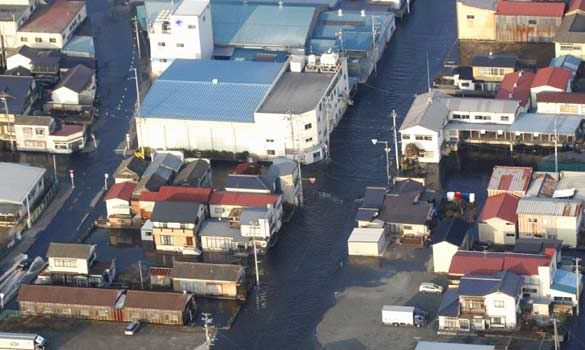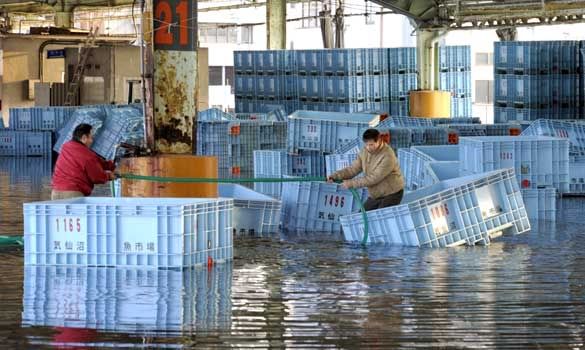
Houses were flooded by seawater in Kesennuma

Most coastal areas suffered only minor damage

Workers attempt to salvage stock at a flooded fish market in Kesennuma, northern Japan
Japan this morning downgraded a major tsunami warning that led to a mass evacuation of more than half a million people along its eastern seaboard and brought large parts of the country to a standstill.
The decision by the Japan Meteorological Agency to downgrade the warning followed the cancellation by the US-based Pacific Tsunami Warning Centre of an alert that affected countries across the Pacific region.
Warnings of a “normal” tsunami remain in place for Japan, however, with authorities cautioning that it will be some hours before an all clear can be given. Tens of thousands are expected to remain in shelters overnight.
Japanese public television, which cancelled normal schedules today, quoted one of the country’s most senior seismology experts, Yoshinobu Tsuji, as warning that tsunami waves were starting to arrive.
“Carelessness is the devil’s workshop,” Yukio Hatoyama, the Prime Minister, said as he urged people not to return to their homes too soon.
The Pacific and Japanese alerts were issued after yesterday’s massive 8.8 magnitude earthquake in Chile and prompted a day of fear across the region as tsunami waves spread across the ocean.
As the afternoon wore on, however, even exposed islands such as Hawaii and New Zealand were spared anything more than slight damage along their coasts.
The warning of a major tsunami – which implies waves more than 3 metres high – was the first that Japan has issued for more than 15 years and sent more than 570,000 people in a rush to higher ground and to shelters. Many of those were constructed in the aftermath of the 1960 Chilean earthquake, which sent a tsunami crashing into Japan that claimed more than 100 lives. Other countries in the Pacific, including the Philippines and Russia, also ordered evacuations from coastal areas.
Towns and villages in the northeastern prefectures of Japan, especially Aomori, spent the day in lockdown mode as vast iron defences were deployed across shopping streets. Fishing fleets put to sea as part of an emergency drill.
In the event, the giant waves that were expected to crash on to Japanese shores landed with heights of, at most, 4ft (1.2 metres) – potentially harmful, but easily contained by sea defences.
Get more info about Tsunami












0 comments:
Post a Comment